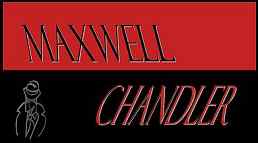
| Page two of Maxwell Chandler's Jazz reviews. | ||||||||||
![]()
Alice Coltrane: Journey In Satchidananda (Impulse)

(on Isis And Osiris)
Alice Coltrane - harp
Pharoah Sanders - soprano Sax/percussion Vishnu Wood-oud
Charlie Haden - bass
Rashied Ali - drums
(all other selections)
Cecil McBee - bass
Majid Shabazz - bells/tambourine
Alice Coltrane - harp/piano
Pharoah Sanders - soprano Sax/percussion Tulsi-tamboura
I bought this album on a last minute whim. I had known of Alice Coltrane but the fact that she was listed on some albums as playing harp was always a deterrent. I just did not see how it could work. My mistake, it is very good.
A musician in her own right, Alice is known for having filled the piano chair in the later years of various ensembles of John Coltrane. It is a shame that, to some extent this association seems to have eclipsed her own musical contributions to Jazz. A lot of John Coltrane classic quartet fans felt adrift and upset over his post quartet career and putting his wife in the piano seat only seemed to further these feelings. She is an accomplished composer/musician in her own right and although her musical association served as inspiration and possibly initial exposure, I am sure we would have heard from her regardless.
The album clocks in at a little over half an hour. Only one track is "short" but the album feels longer than it actually is and one wishes that were the case. There is a unified theme and feel to the album. It encompasses the same slow trance spirituality as John Coltrane Live At The Village Vanguard, minus that recording's discordance.
The harp alternates between staccato-hand dulcimer sounds and almost electronic washes which have been sampled by the more world beat oriented turnbulist. There is no weak track here. For me, favorite tracks are the title track which sets the tone and Stopover Bombay. Stopover Bombay Features Alice on piano. It shows that like John Coltrane, Cecil Taylor and Ornette Coleman no matter how much they created a new distinctive style/sound they were always to some extant rooted in the blues. It starts off as a duet between hand percussion and piano doing a seemingly simple blues pattern, but after the layered groove is established soprano sax soars and dives over this musical terrain.
The band is comprised mainly of people that Alice and John Coltrane had worked with on his final works. This is actually more "accessible" than a lot of that stuff though, making it a perfect launch point for anyone who may want to explore those offerings too.
Pharoah Sanders while showing what he had learned while playing at John Coltrane's side is no mere lesser version. He masterfully incorporates those lessons, mixing it with his own artistic vision to come up with a distinct sound all his own. To his credit also, aside from Steve Lacey he is one of few modern soprano sax players who does not sound like they are trying to channel John Coltrane.
Of special interest is the last track Isis And Osiris which was recorded live at The Village Gate in New York. It features Charlie Haden on bass. Fans of his current L.A. noir-nostaliga group Quartet West may not realize it, but he was one of the initial progenitors of free jazz, being in Ornette Coleman's early brilliant groups and recordings.
The sound quality on the whole album, live track too, is great. Impulse does their usual pristine 20Bit K super mapping. My only (small) complaint is the liner notes are a little "spacey". I always enjoy knowing more about the actual sessions etc, but during this time, this album is far from being the only one guilty of this.
The album authentically incorporates world music inspirations of India and North Africa which is in keeping with the small exotic vacation a listen takes you on.
-Maxwell Chandler - March 05
![]()
Andrew Hill: Grass Roots (Blue Note Connoisseur CD series)
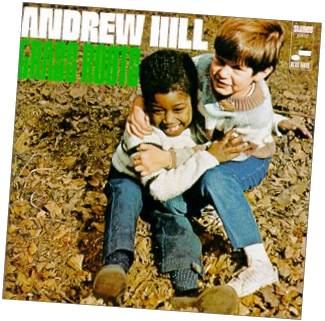
Andrew Hill-piano
Lee Morgan-trumpet
Booker Ervin-tenor saxophone
Ron Carter-bass
Freddie Waits-drums
(bonus tracks #6-10)
Woody Shaw-trumpet
Frank Mitchell-tenor saxophone
Andrew Hill-piano
Jimmy Ponder-guitar
Reggie Workman-bass
Idris Muhammad-drums
Andrew Hill falls into that category of jazz man who is an amazing musician but also offers up equally complex original compositions that do more than serve as a vehicle for solos. The other two people that come to mind are Thelonious Monk and Charles Mingus.
Although each is his own man, there are many similarities between Monk and Andrew Hill. Even when serving as a “sideman” on someone else’s date their presence is felt and their sound is instantly recognizable. Both compose pieces with unique time signatures and odd rhythms and voicing. Andrew Hill utilizing precise jagged lines for his personal solos. Yet unlike a lot of other important players there is no “school’ of Monk or Andrew Hill style of playing.
Andrew Hill is defiantly under appreciated in the states. Go into any of the big chain record stores and you may find his classic Points Of Departure album, but that is it (except for things where he plays piano on other peoples albums)
I came across this CD in London and didn’t have to think twice about grabbing it.
The line up is very interesting. The album is from 1968 and like a lot of Blue Note's more eclectic/challenging works of this period, sat on a warehouse shelf for years. The sparseness of Andrew Hill's output makes this even more of a shame. Part of the problem according to Andrew Hill was finding kindred spirits that understood and enjoyed his music.
Andrew Hill had penned the title tune for Lee Morgan's Rumproller from self same titled album and Ghetto Lights from Bobby Hutcherson's Dialogues album. There seems to have been some definite cross pollination of styles, to everyone's advantage. Style wise this album may be his most accessible. It has one foot in the hard bop waters while the other comfortably rests in the more challenging things going on at blue Note back then ( Lee Morgan's Search For The New Land, Bobby Hutcherson's Stick up, Eric Dolphy’s Out To Lunch) That is not to say it is watered down or that he compromised himself with an album of just blowing-blues based heads.
The fidelity of sound, having been remastered using 20 bit K technology is fantastic. My only gripe is with the liner notes. The original ones are reproduced and there is a small updated addendum (from 1999) A lot of people would have enjoyed “Another look at” notes which are added to the Rudy Van Gelder remasters coming out.
The two different bands on the album are both good and you are not just getting added tracks done, maybe at a different tempo. Some of the same songs are done by both bands but have completely different feel to them.
The first band I enjoy more, just as a matter of personal taste. The stand out for me is the unique paring of Lee Morgan and Booker Ervin. To my knowledge, the only time on record. Lee Morgan could convey complex ideas carried out with an aggressive tone. Booker Ervin released some fantastic albums under his own name on Fantasy/Prestige but was even better known for the magic he worked under Charles Mingus, in his band. Booker Ervin's playing always verged on the “free” style of playing, yet his tone was blues drenched and the epitome of masculine. A charging tenor bull (best example would be the Mingus album Live At Antibes ‘60) He brought that touch of dissonance Mingus liked to throw into his compositions without getting too far out there and rendering the piece unpalatable.
The Rhythm section is tight and Ron Carter can never be given enough props for the fact that he can play with anyone and still sound like himself, yet also manage to fit in.
Throughout the album, with both bands, Andrew Hill's playing is fantastic. The second band features an electric guitar and it is interesting to hear the added space this allows in both the compositions and his own playing.
I wouldn’t recommend one Andrew Hill album over another just because they are so few and so hard to come by. What every you choose will be worth while, only variation being how many listens it may take for you “to get it”.
End Note: This has been a horrible month for jazz. We lost Elvin Jones, Ray Charles, Steve Lacey and Jackie Paris. Long after what masters that are left with us are gone though, jazz will remain what it has always been. A celebration of life and freedom.
-Maxwell Chandler
June 22, 2004
![]()
Thelonious Monk : Thelonious In Action (Riverside)
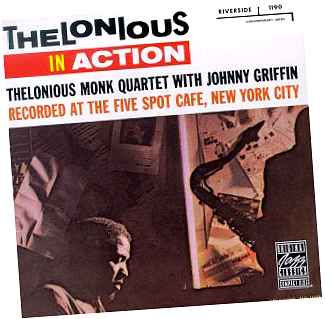
Thelonious Monk: piano
Johnny Griffin: tenor saxophone
Ahmed Abdul Malik: bass
Roy Haynes: drums
Admittedly, when it comes to Monk I am some what biased. He is my favorite pianist and this is my favorite album of his.
This is not the first album mentioned when citing the importance of Monk’s catalog to the world of jazz. Why? Well, Monk never made a bad album (although in his later Columbia years there were defiantly some bad album covers) and this is not one his “important” albums. No soon to be jazz standards were introduced, no tenor super stars (Coltrane, Rollins) were featured.
This is a live date from the little cafe/bar in New York, Five Spot Cafe.
Monk has an important connection to The Five Spot. Monk and fellow pianist extrodinaire Bud Powell had been on their way to the airport. Bud had some controlled substances on him. Being stopped by police Monk refused to turn in his friend. Monk lost his cabaret card, back then important to play any place that served alcohol. Bud received one of many blows to his head, which it has been speculated was start of his decline and medical troubles in later years.
Other artists had lost their cabaret cards and simply moved to Europe where their music got the respect it deserved more readily. Monk choose to stay in New York and just play in his apartment receiving fellow musician visitors and woodshedding it.
Monk's famous “comeback” concert was at The Five Spot with John Coltrane on sax. It is the thing of jazz legend and every year more people claim to have witnessed this now legendary event.
That was the summer of 1957.
This is Monk as he was August 1958. First thing I must say to any potential buyer is about the sound quality. It isn’t terrible, but for any high fidelity/remaster mavens know that you do hear some crowd chatter, a phone occasionally ringing and some glasses clinking. The sound of the instruments are fully captured and while the fidelity isn’t as crisp as later live Columbia recordings neither is it as muddy as “Discovery: Live At The Five Spot” (with John Coltrane, recorded by hand held tape recorder by Naima Coltrane as she sat at table)
A good thing about the “imperfections” of the sound quality, you do hear the musicians snapping fingers during others solos. You hear monk and Johnny working out when to come in with calls of “I’ve got it” and you also hear the soulful grunts and moans that prelude many of Johnny’s long meaty tenor lines.
There is actually a companion piece to this album titled Misterioso recorded a day later. I believe there are currently two Monk albums with this title. I refer to the Riverside album with the funky De Chireco painting reproduced on the cover.
With this version of his quartet Monk didn’t have the near telepathic communication he would with his later, longer lasting group featuring Charlie Rouse on sax. Johnny Griffin was more than capable of playing Monk’s music and his tone and his way of playing brought out a more aggressive blues based feel in Monk’s own playing. In general Johnny has never fully received his due in the U.S. Coming into the group after Coltrane, tough shoes to fill. He is also, probably the fastest Sax player around. Back then and even today. There is more to him than that though. Unfortunately to some extent it trapped him. People just wanted to hear him play fast, they didn’t seem as interested in the other aspects of his playing and even composing (he has a series of fantastic albums as leader which were more than just blowing sessions).
The rest of the band also plays well. Roy Haynes has probably played with everybody at some point and he shows a great sympathy to the intricate rhythms of these pieces. Ahmed Abdul Malik had played with Monk on some blue note dates and keeps the whole thing anchored.
The set is all Monk originals with two versions of Monk’s theme Epistrophy ( a one minute version mid-set then an eleven minute version that combines with In Walked Bud).
For the Monk beginner, this isn’t the album to start with. I would recommend Monk’s Music or Brilliant Corners. Once converted though, this is a must have. A snapshot of a moment that doesn’t age, like all great art, timeless.
-Maxwell Chandler
![]()
Lee Morgan. The Procrastinator (Blue Note Connoisseur Series)
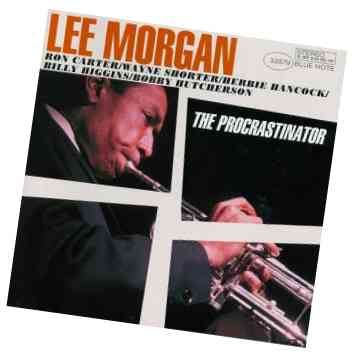
Lee Morgan: trumpet
Wayne Shorter: tenor sax
Bobby Hutcherson: vibes
Herbie Hancock: piano
Ron Carter: bass
Billy Higgins: drums
The Blue Note Connoisseur Series is one of the best things to happen to jazz CDs in a long time. They take out of print or never released obscure classics, remaster them and then re-release them in a limited run.
This CD was originally a mid-sixties release coming after Lee Morgan emerged from a drug induced retirement of several years. The initial strength of his come back was with the release of The Sidewinder. It was a blessing and a curse for him. The danceable blues inflected title track was so successful that for several years it seemed almost all Blue Note artist must have a similarly styled track on their album. Recorded at the same time was the more intricate and forward looking album Search For The New Land. One can only wonder what may have been if that had been released first.
Despite demand for more Sidewinder style material there were still some heavier albums made which relied less on the standard hard bop formula. The Procrastinator is perfect companion piece to Search For The New Land. Suite like compositions and added depth of space and sound from the inclusion of more “unique” instruments (on Search Grant Green on guitar, on The Procrastinator Bobby Hutcherson on vibes) This CD has less the melancholy than that of Search For The New Land, but it is still rich in atmospherics.
The line up here is stellar. All the musicians had played together before in various configurations on many classic Blue Note albums of the sixties. Their familiarity with each other comes through in six seamless performances.
Both in tone and performance there is no weak link. Within this albums ensemble of musicians was the core of Miles Davis immortal free-bop group (Wayne Shorter, Herbie Hancock, Ron Carter) who were recording the album Nefertiti at the same time. Here again, is further example of the wordless communication members of this Miles band had, had. Wayne Shorter, always his own man in performance style he has an almost Coltrane-ish sound here. Maybe a way for him to have a working vacation? Regardless, having a sound similar to Coletrane can never be a bad thing.
The rest of the band plays well and confident. Bobby Hutcherson presenting a new way to look at and hear vibes in jazz, different from that of Lionel Hampton and Milt Jackson.
Lee Morgan has a bright strong tone, showing some of his earlier Clifford Brown influence but also bringing something uniquely his own to the mix.
Billy Higgins had played drums on many immortal Blue Note albums including The Sidewinder. He keeps it interesting without ever getting too flashy. Showing once again why he was such an in demand drummer.
At this point in his career Lee Morgan had taken on a new seriousness. Gone were the album names that were puns on his name and gone too were the names that seemed to search for some type of tough street credibility. Emerging during this period was also a new emphasis on compositions he had penned himself. He began to lobby in the press for jazz, its players and composers to be taken more seriously.
Unfortunatley February 9,1972 he was shot dead by his common law wife while paying an engagement at the club Slug’s.
The Connoisseur re-release of this CD is a fitting tribute to a lesser known jazz giant. I highly recommend it.
Maxwell Chandler
![]()
Jackie McLean: Right Now! (Blue Note. The Rudy Van Gelder Edition)
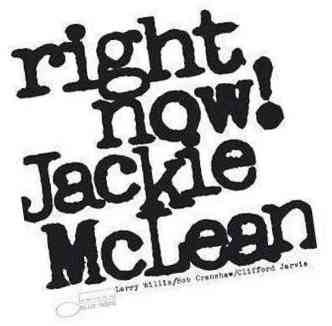
Jackie McLean: alto sax
Larry Willis: piano
Bob Cranshaw: bass
Clifford Jarvis: drums
The Rudy Van Gelder Editions by Blue Note takes both obscure albums and classics from the lexicon of jazz and remasters them. The original liner notes are reproduced and “A New Look At...” is also added. Allowing us to more accurately asses the artist and their work with the hindsight that can only come from the passage of time.
Jackie McLean really hit his stride in the sixties. One of the reasons was the policy set forth by the powers that be at Blue Note which allowed for far more rehearsals than then was the norm. This fostered the use of more originals and also more complex arrangements by the artist. As opposed to his Prestige releases this made for a more challenging and ultimately more rewarding discography. It didn’t hurt either, that at this point Blue Note had a studio stable of artist sympathetic to one another and also able to inspire each other to greater heights.
Right Now! Is a smaller ensemble than some of his other albums from this period. Stylistically it fits in with A Fickle Sonance and Let Freedom Ring. For this album Jackie opted for lesser known players and the music doesn’t suffer for it. The band play well together, sounding like a band and not just musicians backing Jackie.
In his style of playing Jackie had built off of the theories and fire of his bop heroes while also looking forward towards the Free jazz thing as exemplified by Ornette Coleman and later day Coletrane. Wisely, never fully embracing it allowed him to avoid becoming too discordant or (now) sounding “dated”.
Aside from never dull compositions, one of the appeals of his sixties work is an instantly recognizable tone. A sort of anguished cry that commands your attention from its first notes. It is a tone tailor made for the compositions of Jackie and his like minded associates conveying both intellect and raw emotion.
The tracks are all different in mood but do form a cohesive picture. The stand out track being Poor Eric, a lament for the then recently departed Eric Dolphy. Bob Cranshaw alternates between bowing his bass in sympathy to the main theme and plucking. The other stand out is the title track, a long grove with an almost hypnotic piano line that comes and goes. Despite the generous length of each track, not once does this effect their finely wrought tension.
A lot of Jackie’s album had gone out of print and two from this era are still to be released. With reissues such as this, hopefully this hard bop titans name will be on more than just jazz aficionados lips.
Maxwell Chandler
April '04
![]()
Duke Ellington: Piano In The Foreground ( Columbia )
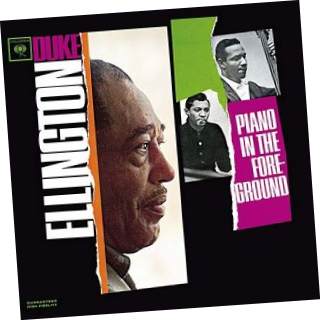
Duke Ellington-piano
Aaron Bell (#1-12) Jimmy Woode (#13-18) bass
Sam Woodyard-drums
This, along with Duke Ellington’s Blues In Orbit is part of Columbia’s Legacy remastered reissue series. The sound is exquisite and noticeably improved upon even from the Columbia CD versions available a few years ago. It contains six bonus tracks which are not merely leftovers from the sessions, but as equally compelling in their own right as any of the other tracks.
The band is trio format. It is a very relaxed session, but that is not to say it ever veers into sloppiness or a mere blowing session. Throughout there is a tangible sense of camaraderie among the musicians. This was not just some guys backing a legend, not just Duke’s employees. There is a sense of intimacy which can only exist when great men collaborate to create a timeless piece of art.
I have said before that Duke recorded so little in small settings (or solo) that it is never a matter of “either or” when choosing these albums. This is not as “classical” as Live At The Whitney, nor is it as tension fueled-blues based as Money Jungle ( a trio with Charles Mingus and Max Roach) This album finds Duke showing his many sides. He had always been forward thinking, a modernist, even from the start. It was no accident that one of Monk’s first Riverside albums was an all Duke cover album.
To me, one of the pleasures of Duke’s solo and smaller ensemble recordings has always been the revelation of just how forward thinking he had always been. The playing, compositions and also that instantly recognizable tone.
His tone is reminiscent of the best French composers, Debussy, Ravel, Delibes. It is rich and moody. All cool blues and limpid greens.
There is not a wasted moment on this album and many highlights. In the original, Congo-Go Duke further sows the seeds of jazz noir that had begun with his Anatomy Of A Murder score. Body And Soul finds the rhythm section locked down tight as Duke veers into complex Monk-like rhythms. Summertime has become for me, aside from the John Coltrane version, the definitive version. Too often now, this widely covered standard lapses into an almost music theater melodrama. Here you can picture it truer to how it was intended. A lament to suffocating sensuality and angst. Characters all caught up in Eros and Thantos from which they can not turn away conveyed powerfully by this trio. Opera without words.
There has always been much more to this man than the few songs everybody seems to know. Take advantage of the resurgence of interest in this composer and the availability of some fantastic and shamefully lesser known compositions.
Maxwell Chandler
December '04
![]()
Duke Ellington and His Orchestra: The Far East Suite - Special Mix
(Bluebird/RCA)
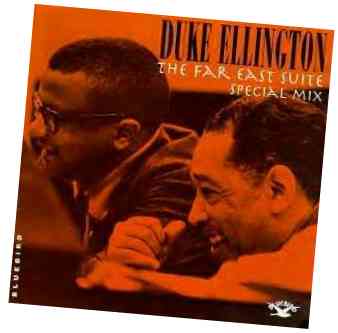
Cootie Williams, William “Cat” Anderson: trumpet
Mercer Ellington, Herbie Jones: trumpets and flugel horns
Lawrence Brown, Buster Cooper, Chuck Connors: trombones
Jimmy Hamilton: clarinet and tenor sax
Johny Hodges: alto sax
Russell Procope: alto sax and clarinet
Paul Gonsalves: tenor sax
Harry Carney: baritone sax
Duke Ellington: piano
John Lamb: bass
Rufus Jones: drums
Briefly, a reader recently commented that it would appear I never heard a jazz album I didn’t like. This is far from the truth, but unless it’s a reissue I have eagerly been waiting for which greatly disappoints, I would rather use my column to turn people onto some things they may not normally hear about.
Duke Ellington suffers a similar fate to James Joyce’s Ulysses. Both are considered important contributions to the world of modern art, but more often are written/talked about than actually enjoyed. A cursory glance at Duke’s top sellers shows that most are greatest hits CDs which is a shame since he had a vaster catalog with music which was more challenging than “Take the A Train” yet still managed to swing.
Duke’s music, especially towards the end was a pleasing, complex amalgam of Western symphonic influences, jazz and spiritual music (incorporating some gospel and soul).
The Far East Suite came out in June 1967, inspired by a 1963 state department tour which included Amman, Kabul, New Delhi, Ceylon and a handful of other exotic locals. The music should not be looked at as incorporating what would become known as “world music”, but being inspired by the sights and sounds of this amazing tour. A few years down the line people like Randy Weston and Art Ensemble of Chicago would go for a deeper authenticity in incorporating the actual sounds into their music.
This new version comes with the albums original linear notes, the story/explanation behind the remastering and new notes by Stanley Dance who had also supplied the original.
The new remastering of the album is by Orrin Keepnews who has in the past done equally impressive job on reissues by Thelonious Monk.
The first thing you notice besides the pristine sound is Duke’s piano. A humble man, he always under valued his own playing. Years of having to rough it on out of tune pianos helped him create a technique which incorporates odd voicing. Giving us a glimpse of what it may have sounded like if Debussy had played jazz, it doesn’t dominate any of the pieces always coming in and out at the perfect time.
The whole band plays with a swinging tightness which was par for the course of any version of Dukes band.
Of special note is drummer Rufus Jones. To listen you wouldn’t know this was his first recording date with Duke. Listen to the drum beat of Blue Pepper/Far East Blues. It will sound familiar, being one of the most often sampled drum beats by club turnbalist world wide.
A personal favorite is Mount Harissa which starts off as just a trio consisting of drums, bass and piano. Later on in the piece the drums do a bolero while the bass does a tango. Two separate genres which perfectly form a cohesive picture, dictating the overall mood of the piece.
The album style wise is hard to peg down. It isn’t big band as is normally thought of, nor is it third stream music. There in I think lies the problem with the masses discovering the later period Ellington. Albums of similar quality would be Such Sweet Thunder which was originally commissioned by Stratford Ontario’s Shakespeare Festival, each piece being inspired by a character from the bard. And The New Orleans suite. These are some of the important pieces for which we should remember and treasure Duke Ellington.
An unexpected side effect of an album which manages to be complex but also fun is that with each repeated listen this album offers up new treats. With headphones especially you will notice new things, little nuances. Discover for your self one of several albums by Duke Ellington that deserves to be considered a classic.
Maxwell Chandler
![]()
| Click Here |
Page one of Max's Jazz reviews
